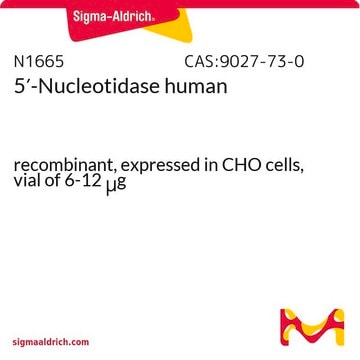N2787
Monoclonal Anti-Neurofilament 160 antibody produced in mouse
~2 mg/mL, clone RMO44, purified immunoglobulin, buffered aqueous solution
Sinónimos:
Anti-Neurofilament Medium Chain
About This Item
Productos recomendados
origen biológico
mouse
conjugado
unconjugated
forma del anticuerpo
purified immunoglobulin
tipo de anticuerpo
primary antibodies
clon
RMO44, monoclonal
Formulario
buffered aqueous solution
reactividad de especies
human, mouse, rat, zebrafish
concentración
~2 mg/mL
técnicas
immunohistochemistry: suitable
microarray: suitable
western blot: 1-2 μg/mL using extract of SHSy5y human neuroblastoma cells
isotipo
IgG1
Nº de acceso UniProt
Condiciones de envío
dry ice
temp. de almacenamiento
−20°C
modificación del objetivo postraduccional
unmodified
Información sobre el gen
human ... NEFM(4741)
mouse ... Nefm(18040)
rat ... Nefm(24588)
Descripción general
Inmunógeno
Aplicación
- enzyme-linked immunosorbent assay (ELISA)
- western blot analysis
- immunohistochemistry
- antibody labelling
Acciones bioquímicas o fisiológicas
Forma física
Cláusula de descargo de responsabilidad
¿No encuentra el producto adecuado?
Pruebe nuestro Herramienta de selección de productos.
Opcional
Código de clase de almacenamiento
10 - Combustible liquids
Clase de riesgo para el agua (WGK)
nwg
Punto de inflamabilidad (°F)
Not applicable
Punto de inflamabilidad (°C)
Not applicable
Elija entre una de las versiones más recientes:
¿Ya tiene este producto?
Encuentre la documentación para los productos que ha comprado recientemente en la Biblioteca de documentos.
Nuestro equipo de científicos tiene experiencia en todas las áreas de investigación: Ciencias de la vida, Ciencia de los materiales, Síntesis química, Cromatografía, Analítica y muchas otras.
Póngase en contacto con el Servicio técnico







